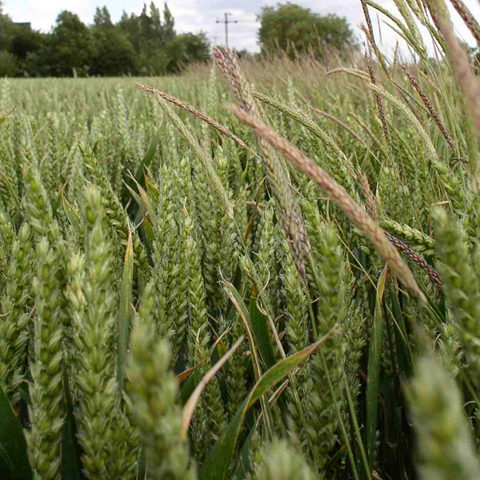A recognition that cultural control measures would eventually surpass formulated herbicides in controlling black-grass led Agrii to initiate what has become the longest-running distributor R&D weed control trial in the UK. Over the years, the learnings have been shared with those facing black-grass challenges of their own.
The trial, which is dedicated to the pursuit of improving control using all available measures, began in 2000. The trial has documented several notable findings. The once strong and subsequently waning performance of certain herbicides has been recorded while the contribution of non-chemical measures has come to be recognized.
After 22 years, the overriding conclusion is that no single measure will deliver the high-level control needed to bring about a sustained reduction in the weed population. It requires a truly integrated approach, explains Colin Lloyd, Agrii’s head of agronomy, who initiated the project.
“The skill is in bringing it all together. It’s not a case of simply following a prescribed course of actions,” he says.
In the early 2000s it was relatively easy to achieve a high level of black-grass control. A November application of Atlantis (iodosulfron-methyl-sodium + mesosulfuron-methyl) would regularly control upwards of 90% of the population. After several years of selection pressure, this seemingly reliable control began to wane and by 2012 control in the trials at Stow Longa had fallen to less than 40%. This experience clearly demonstrates the short-term nature of relying on single site mode of action herbicides, but also the fallibility of a less-than-integrated approach.
“We should never rest on our laurels as we did with Atlantis, nor should we discount a means of control based on an ideological view of how to farm. The plough, while out of fashion amongst a large cohort of farmers, regularly delivers the single biggest reduction in populations of any management intervention, but it alone is not enough to achieve the 97% control needed to reduce populations over the long-term,” Mr Lloyd says.
The Agrii experience is that success comes from adopting an integrated approach across the rotation with measures implemented where they will make the greatest contribution. The challenge to growers is to balance those that improve control with the pressure to optimize profitability.
Spring cropping has repeatedly been shown to support better control by way of greater use of the non-selective herbicide glyphosate ahead of drilling. The trial at Stow Longa suggests spring oats have performed best in this situation followed by spring barley and spring wheat respectively. The principal consideration is that the gross margin returns can be less than the winter cereal of choice, winter wheat.
“This is the trade-off to consider. The financial rewards of spring crops may be less appealing, but a reduced autumn workload means smaller, often less expensive, machinery is enough to complete drilling. There is also less need for pre-emergence herbicides, all of which adds up to a saving in costs,” Mr Lloyd says.
Extending the rotation to include more crop species or facilitate cover crops if soil types and conditions allow has benefits beyond a possible contribution to black-grass control, but again such decisions should not be made lightly.
“Winter beans are often promoted as presenting a useful opportunity to control grassweeds, but their need for a deeper tilled seedbed is significant. Within the rotations trial at Stow Longa, the direct drilling/min tillage area over the last six years has left the ground tight which led to a poor crop.
Extending the rotation to include more spring crops will also support control of other weeds, especially those that thrive in low-disturbance regimes.
“Growers need to be wary of exchanging one problem for another. At Stow Longa, we have seen a worsening problem with soft and meadow bromes in the direct-drilled plots. It was made worse where a cover crop was sown straight after harvest. Our experience is that the soil should be left undisturbed for at least a month to allow these bromes to mature and germinate so they can be controlled,” Mr Lloyd says.
Similarly, abandoning inversion tillage practices or adopting cover crops is just as likely to make the black-grass burden worse, at least in the short-term.
“Moving from a plough-based system to a low-disturbance drill and cover crops in one year resulted in poor straw distribution, lower establishment and worse black-grass. The transition takes time, it is not a quick fix where grassweeds are an issue,” Mr Lloyd says.
“Similarly, after six years of min-till/direct drill with catch/cover crops, the black-grass population remained at elevated levels. In this situation, the plough provided an opportunity to achieve a reset,” he adds.
Over the course of the eight-year trial, black-grass populations have fluctuated in response to establishment practices. In year five of the six-year low disturbance/cover crop trial, the cultivation tines of the drill were dropped in about 25mm lower than previous years because the seedbed was tight for the introduction of catch/cover crops and needed it. The black-grass population subsequently soared to 376 ears per m2. By ploughing part of the plot the following year, the population was reduced to 39 ears per m2 compared with 349 ears per m2 in the continued direct-drilled section.
“Don’t be bound to an ideology. If it’s not working, try something different,” Mr Lloyd concludes.
The No-Till Passport series is brought to you by Martin Industries.
Since 1991, Martin Industries has designed, manufactured and sold leading agriculture equipment across the U.S. and Canada. Known for Martin-Till planter attachments, the company has expanded to include a five-step planting system, closing wheel systems, twisted drag chains, fertilizer openers and more in their lineup. Their durable and reliable planter attachments are making it possible for more and more farmers to plant into higher levels of residue.








Post a comment
Report Abusive Comment